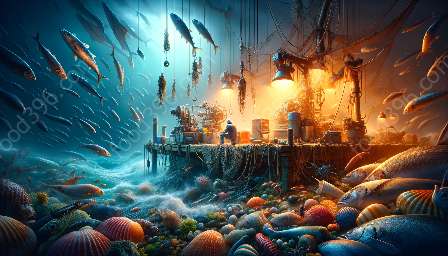Today, the fishing industry relies on advanced technology and equipment, while seafood science plays a critical role in ensuring the quality and sustainability of the seafood supply. However, the preservation of fish habitats remains fundamental to the longevity of the industry and the health of aquatic ecosystems.
Fish Habitat Restoration and Conservation Efforts
Conservation efforts are crucial for maintaining the delicate balance of aquatic ecosystems and preserving fish habitats. As such, numerous initiatives are being implemented to restore and protect these habitats, ensuring the sustainability of fish populations. Many organizations and government agencies are actively involved in this endeavor, working to address the various challenges facing fish habitats such as pollution, overfishing, and habitat destruction. Efforts to restore and protect fish habitats encompass a wide range of activities, including:
- Habitat Restoration Projects: These projects involve the restoration of degraded fish habitats, such as wetlands, rivers, and estuaries. Restoration efforts may include re-establishing native vegetation, removing invasive species, and improving water quality to provide a conducive environment for fish to thrive.
- Conservation Policies and Regulations: Governments and regulatory bodies play a crucial role in implementing policies and regulations that aim to protect fish habitats. These measures often include restrictions on fishing practices, habitat preservation zones, and guidelines for sustainable development along coastlines and water bodies.
- Community Engagement and Education: Engaging local communities in habitat restoration efforts can foster a sense of stewardship and responsibility towards the environment. Additionally, educating the public on the importance of preserving fish habitats can lead to increased support for conservation initiatives.
Fishing Technology and Equipment
The advancement of fishing technology and equipment has significantly influenced the efficiency and sustainability of fishing practices. Innovations in gear, navigation systems, and fishing methods have allowed for more precise and selective harvesting, minimizing the impact on fish habitats and non-target species. Some key advancements in fishing technology include:
- Sustainable Fishing Gear: The development of gear and equipment that reduce bycatch and habitat disturbance has become a focal point for sustainable fishing practices. Innovations such as escape panels in nets and acoustic deterrent devices help protect non-target species and preserve fish habitats.
- GPS and Sonar Systems: Modern fishing vessels are equipped with advanced GPS and sonar systems that enable fishermen to accurately locate fish populations while avoiding sensitive habitats. This technology allows for more targeted fishing efforts, reducing the unintended impact on vulnerable ecosystems.
- Efficient Processing Tools: On-board processing tools and equipment streamline the handling and storage of catch, minimizing waste and preserving the quality of seafood. This advancement contributes to sustainable fishing by ensuring that harvested fish are handled with care and efficiency.
Seafood Science and Quality Assurance
Seafood science plays a pivotal role in upholding the quality and safety of seafood products while promoting sustainability throughout the supply chain. Through scientific research and technological advancements, seafood scientists and industry professionals work to improve seafood production, processing, and distribution. Key aspects of seafood science include:
- Quality Control and Assurance: Seafood scientists are dedicated to upholding the highest standards of quality and safety in seafood products. Advanced techniques for testing and monitoring seafood products help ensure compliance with regulatory standards and consumer expectations.
- Sustainability Assessments: Understanding the ecological impact of fishing practices and assessing the sustainability of fisheries is essential for seafood science. Through data analysis and ecosystem modeling, scientists can provide valuable insights into the long-term viability of fish populations and their habitats.
- Innovative Processing Methods: The development of novel processing methods and technologies contributes to reducing waste and improving the utilization of fish resources. From canning and freezing to novel preservation techniques, advancements in seafood processing enhance the efficiency and sustainability of seafood production.
By recognizing the interconnectedness of fish habitat restoration, fishing technology, and seafood science, we can shape a more sustainable future for the fishing industry. Efforts to preserve fish habitats directly contribute to the resilience of aquatic ecosystems, complementing the advancements in fishing technology and the principles of seafood science to ensure a thriving and resilient seafood supply.

